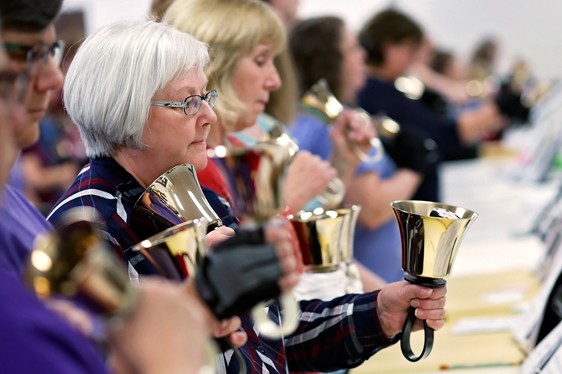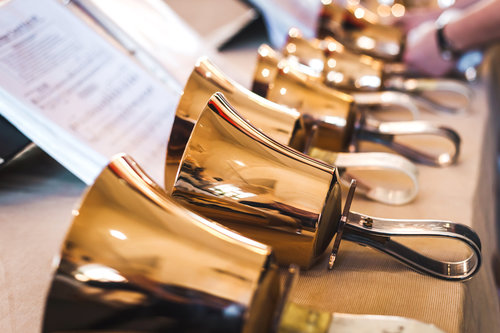The Bells of Northfield
Do what you know best; if you’re a runner, run, if you’re a bell, ring. - Ignas Bernstein, proverbicals.com
And ring they do: church bells, school bells, dinner bells, cow bells, steamboat bells, and even Chris Van Allsburg’s first-gift- of- Christmas silver bell. They ring to make music, to announce something, and to sound an alarm. Their uses are varied, excitedly anticipated, greatly feared, and much appreciated. First discovered in China thousands of years ago, bells found their way across the continents to the New World bringing their own brand of civilization to the pioneering towns of Minnesota.
To the early travelers, bells were a “symbol of civilization…a link with the life left behind.” (Some Historic Bells of Minnesota, 1937). This life left behind included bell towers in stately churches on the east coast of the United States where change ringers worked together to ring out music like none other. In order to perform such intricate melodies, the bell ringers needed to practice for hours to memorize the numerical sequences. This meant hours of sound that was less than inspiring for surrounding communities. Smaller bells were eventually developed to allow change ringers to practice indoors and these eventually found their way to the United States and the growing Midwest. Interest in handbell ringing grew and by the 1950s, what is now the Handbell Musicians of America, was born. They organized “to educate, promote the exchange of ideas relating to handbell and handchime ringing, and sponsor educational activities” and have worked hard since to accomplish their motto: Uniting People Through a Musical Art.

The sweet sound of musical bells came to Minnesota sometime in the 1970s and lit a passion for bell ringing that continues to fill the air locally and around the world. In Northfield alone, youth and adults ring handbells and tone chimes in six churches—Church of St. Dominic, Northfield UMC, St. John’s ELCA, Trinity Lutheran, Bethel Lutheran, and St. Peter’s Lutheran; two colleges—Carleton and St. Olaf; and the Northfield Handbell Ensemble. Their music ranges from Christmas to sacred to classical to jazz to whatever appeals to the director and varies in complexity according to the experience of the group. Robert Thompson, Professor of Organ, founded the St. Olaf College Handbell Choir in 1983. Two years later, Norman Heitz took over as director equipping the group with five octaves of bells used today. The choir has grown into three handbell ensembles, The St. Olaf Handbell Choir, Chapel Ringers, and the student-led Manitou Handbell Choir, and since 1995 has been directed by Jill Mahr. The St. Olaf Handbell Choir will perform next on February 25 at the Cathedral of Our Merciful Savior in Faribault. For performance and ticket information for all three ensembles, go here. The Area 7 chapter of the Handbell Musicians of America will be holding a two-day ringing event with a free public concert at Beautiful Savior Lutheran Church in Plymouth.
Many churches in the Minneapolis-St. Paul area have handbell choirs. Websites display photos of their members; many have been playing for years, even decades, but don’t let that scare you away from trying it. So, what does bell ringing require? Dan Olson at mprnews.org talked to someone who has taught many people over the years the fine art of bell ringing and he learned that “handbell ringing is a team effort. Ringers get to play only their assigned bells and notes, requiring counting and paying attention.” Betty Fletcher Mast was asked to start a bell choir for boys but had to start from scratch and, now, 50 years later, has started or directed more than twelve groups. She has left handbell ringing to others but has discovered that even though she has left the ringing, the ringing has not left her. For an experience that promises to challenge and uplift, to bring peace and fun, that requires little more than counting with a rhythmic attitude, join a team near you and ring that bell.
CREDIT: bethelbeaverton.org
Salvationarmynorth.org

